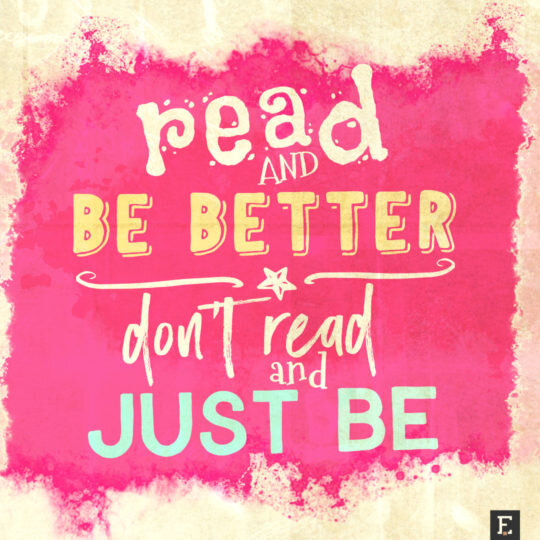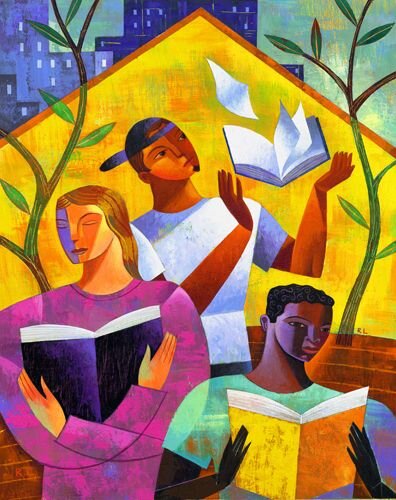25 Short Stories for Middle and High School Written by Authors of Color
Our classrooms are made up of amazing, beautiful, and diverse students. Therefore, we feel that our curriculum should reflect that same diversity. The stories we read, the texts we share, the videos we watch, the images we use within our lessons should all act as mirrors and windows for our students.
The phrase “mirrors and windows” was initially introduced by Emily Style for the National SEED Project. A mirror is a story that reflects your own culture and helps you build your identity. A window is a resource that offers you a view into someone else’s experience. It is critical to understand that students cannot truly learn about themselves unless they learn about others as well.”
Below is a list of some of our favorite short stories written by BIPOC authors that we like to include within our curriculum throughout the year.
Stories for Middle School
“My Name” by Sandra Cisneros is a short narrative about a girl and her feelings towards her name. We love using this short story as an introduction to our identity unit at the beginning of the year. We also have a great back to school activity that we use after reading this short text. You can find our blog post about it here and another here.
“Seventh Grade” by Gary Soto is a great story about the first day of seventh grade, a middle school boy's crush, and the hilarious ways in which he tries to get her attention. We also have lessons for this short story that you can find in our Teachers Pay Teachers store here.
“Thank You Ma’m” and “One Friday Morning” by Langston Hughes are both amazing short stories for middle grades. “Thank You Ma’m” is great for teaching students about the Notice and Note Signposts and we have a great unit that we have created for “One Friday Morning,” that you can find here.
“Fish Cheeks” by Amy Tan is a short autobiographical narrative that many of our students connect with. “Fish Cheeks” is about a fourteen-year-old girl named Amy who lives in America. The problem Amy experiences is that she is ashamed of her family and she wishes that she and her family were more American so she can fit in.
“The Scribe” by Kristin Hunter is a great story to use to teach characterization, plot, theme, as well as many other literary elements. This short story takes place in an unspecified American city in 1972. We have a great set of activities for this short story. You can find it here.
“What I Have Been Doing Lately” by Jamaica Kincaid is a stream of consciousness narrative set in the recent past on a tropical island. This is a fun story to read to showcase the various writing styles of authors.
"Raymond's Run”, “War of the Wall”, and “The Lesson” by Toni Cade Bambara are all amazing short stories for middle school students. Bambara’s fiction is often set in the rural South as well as the urban North. Her characters are always well developed and students are instantly drawn to them. We have a unit for the short story “Raymond’s Run” that you can find here.
“Snow” by Julia Alvarez is a short story about a ten year old girl named Yolanda. She is a little girl living in New York and is new to the city and to America in general.
Stories for High School
“A Very Old Man With Enormous Wings” and “One of These Days” are both by Gabriel García Márquez. “A very Old Man With Enormous Wings” is about a poor family burdened by a disoriented old man who happens to have very large wings. We have a great lesson for this story that focuses on making connections, analyzing theme and satire through student literary argument/analysis writing. “One of These Days” portrays an interesting power dynamic between the two main characters, a dentist and the mayor, and the corruption in a small town.
“Liars Don’t Qualify” by Junius Edwards is one of our favorite short stories to teach. We love the unique style that this text is written in. Junius Edwards tells almost the whole story strictly in dialogue. We use this short story to teach conflict, characterization, multiple perspectives, mood and tone, and theme through student literary argument/analysis writing. If you’re looking for a comprehensive lesson that works for this short story, you can find it here.
“Lather and Nothing Else” by Hernando Tellez is a great story for teaching internal conflict. The story highlights the struggle of a local barber who is tasked with shaving the beard of a military captain. The captain has just captured 14 men who are a part of an opposing rebel group. The barber himself is also a part of that same rebel group. He must decide, does he kill the captain or let him live. Students are always engaged when reading this short story!
“Dead Men’s Path” by Chinua Achebe is a Nigerian short story about the struggle between traditions and the perils of forcing a village into the “modern age.” It has a great plot twist type ending that always gets students talking.
"The Aged Mother” by Matsuo Basho is a Japanese folktale that tells the story of an unkind ruler who issues cruel orders, including one demand that all old folks are to be abandoned and left to die. Basho tells a poignant story about a mother and her son and their love for one another.
“Continuity of Parks” by Julio Cortázar on this comparative literature blog post for UCSB in which they state that “Continuity of Parks” ‘blurs the lines between reality and the world of literature with vivid imagery and a shroud of uncertainty to illustrate the dangers of the diving too deep into fantasy and obsession.” It’s a mind bender for sure!
“The Woman in the Snow” by Patricia C. McKissack in this ghostly little tale, students will be confronted with themes surrounding kindness and compassion. Be sure to do some prereading activities surrounding the Montgomery Bus Boycott before reading this text to provide your students with some schema.
“The Flowers” and “Everyday Use” by Alice Walker are both short stories by the author of the Pulitzer Prize winning novel, The Color Purple. “The Flowers” is a heavy piece of literature in which a young girl, picking flowers, discovers the body of a hanged man. It is full of symbolism and is a great story to study theme. “Everyday Use” is a story about a mother and her two daughters. It is a story about heritage and tradition. We have a great literary response and analysis unit of study for this short story that focuses on theme, symbolism, plot, conflict, and character.
“A Ride Out of Phrao” by Dina Nayeri is an interesting narrative about a woman who joins the Peace Corps and moves to Thailand in order to escape the embarrassment of her life in America. This short story is lengthy and would be best for Juniors or Seniors.
"Cell One" by Chimamanda Ngozi Adichie is the first story in a book of stories titled The Things Around Your Neck. In "Cell One," the narrator tells the story of her brother's time in prison. Nnamabia is a handsome and charming teenager who steals and pawns his mother's jewelry when he's 17. Three years later, the Nsukka university campus where the siblings’ mother and father teach is embroiled in cult wars.
“The Price of Bananas” by Mulk Raj Anand captures the subtleties of class division succinctly. The story describes the negligent, mean attitude of the affluent towards the poor.
While not short stories, we love this list of Native American poetry and try to include a few of these poems into our curriculum whenever possible.
While this list is not exhaustive, we hope that you can find a few short stories mentioned above to include in your class curriculum. No matter what age our students are, they always love to be read to. Including a more diverse set of stories and texts will help act as mirrors and windows for your students.
Until next time teacher friends,
Bottoms Up!



